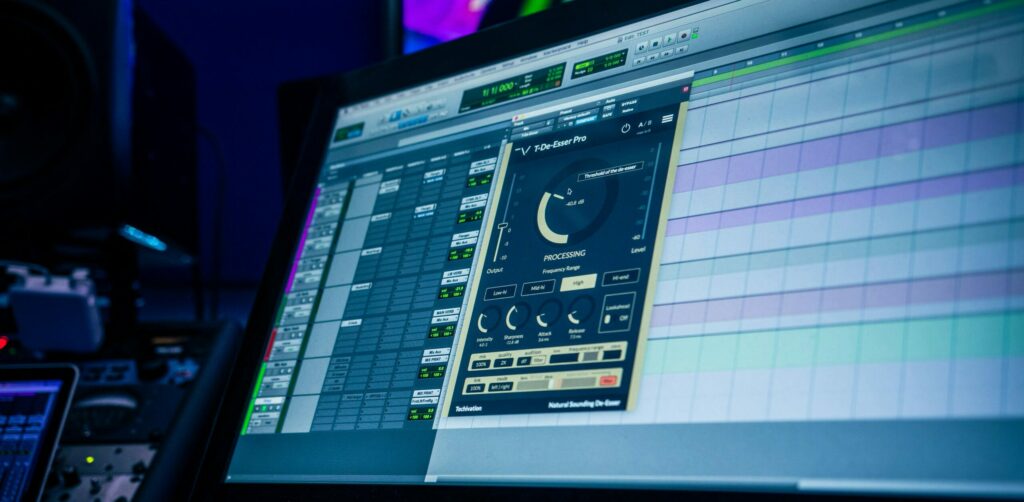At first, the term “de-essing” might sound technical and advanced. But in fact, de-essing means exactly what it sounds , like: to reduce “s.” A de-esser performs the task of de-essing. We make “s” sounds all the time in regular speech (the word “speech” is a good example) or to produce certain effects like hissing. Any linguist or phonetician will tell you that these sounds, formed by pressing the tongue past the roof of the mouth toward the teeth and passing air through them, are called sibilance. Sibilance is created by consonants like “s,” “c,” “t,” and “z,” for instance.
Why Do We Need De-essing?
It turns out that sibilant sounds come through at the higher end of the frequency spectrum. Usually falling somewhere between 2kHz and 10kHz, these harsh sounds can cut too sharply into the mix. As you might have guessed, these stinging tones created the need for the de-essing process. De-essing doesn’t eliminate sibilance but reduces it.
Of course, every vocalist has different vocal qualities, meaning some singers will produce sibilance at higher, harsher frequencies, while others won’t. Vocal training also plays a role here, as does the acoustic room treatment and mixing parameters. Regardless, unless the lyrics contain no sibilant sounds (which is highly unlikely), you’ll run into sibilance sooner or later. Therefore, you’ll need to find ways to go about de-essing.

Ways To De-ess
De-essing can be done in more than one way, though the two most common methods are via automation and de-esser plugins. The former method takes much more time and attention than the latter, but both prove useful.
As we’ve explored before, mix automation provides a great way to hone in on specific elements of a mix and manipulate them exactly how you see fit. In this instance, we would want to use volume automation. Because sibilance cuts through at higher frequencies, these sounds are often louder. To reduce this harshness, you can go through the track and manually decrease the volume wherever sibilance occurs. Once you’ve set the automation nodes, the track will automatically decrease the volume at the desired times.
Again, while this method works well, it takes time. De-essers take some direct control out of your hands but work much faster. These plugins become powerful tools in any mixing arsenal.
How A De-esser Works
We can think of a de-esser as a sort of hybrid between equalizers and compressors. Like an equalizer, a de-esser pays attention to frequencies. However, de-essers hone in on a specific range of frequencies as opposed to the entire spectrum. And like compressors, de-essers introduce a volume threshold, but only for the selected frequency band. In other words, de-essers automatically reduce the volume whenever a sudden spike in frequency above the threshold is detected.

Conclusion
When we speak, we usually don’t pay much attention to things like sibilance (though now you might). When it comes to mixing vocals, however, every little detail matters, especially harsh sounds produced by sibilance. De-essing provides an easy way to ensure that sibilance doesn’t throw off the entire mix.
À propos de l'auteur

Ethan Keeley
Rédacteur, chanteur, musicien et monteur audioEthan Keeley est un musicien, un doubleur et un écrivain de Rochester, dans l'État de New York. Lorsqu'il n'est pas en tournée avec son groupe Unwill, il travaille sur de nouvelles chansons et histoires.
Laisse un commentaire
Connecte-toi pour commenter.


